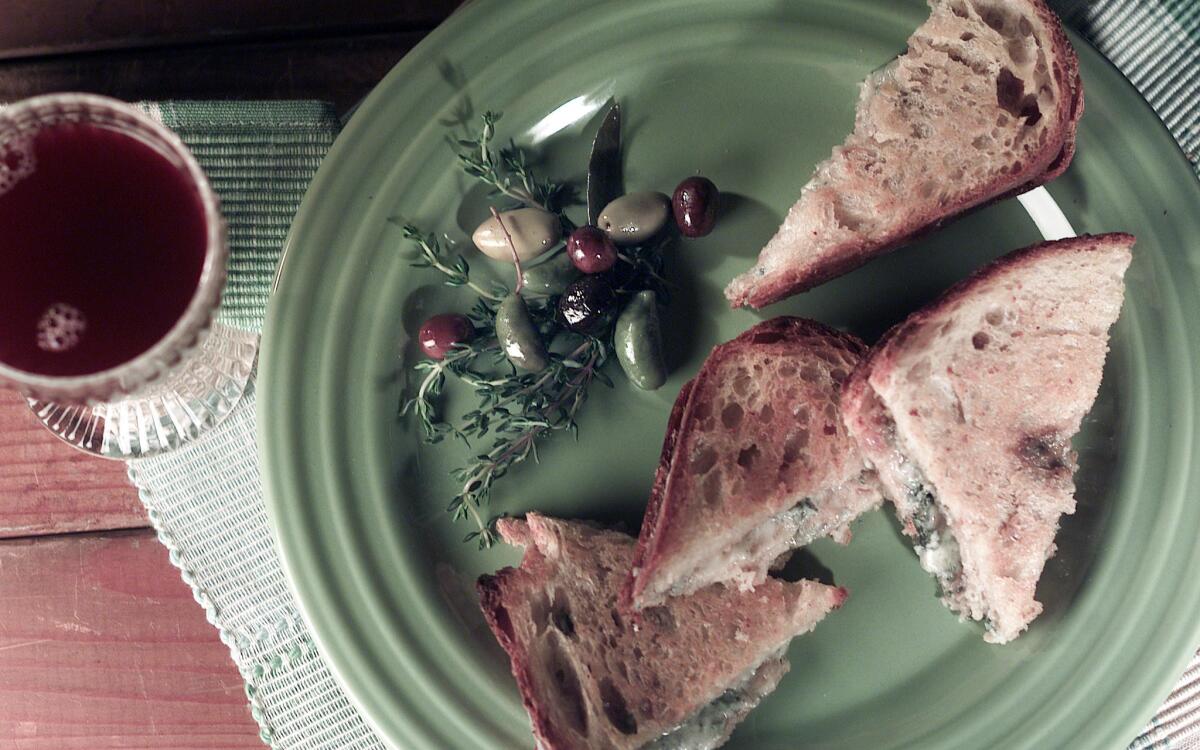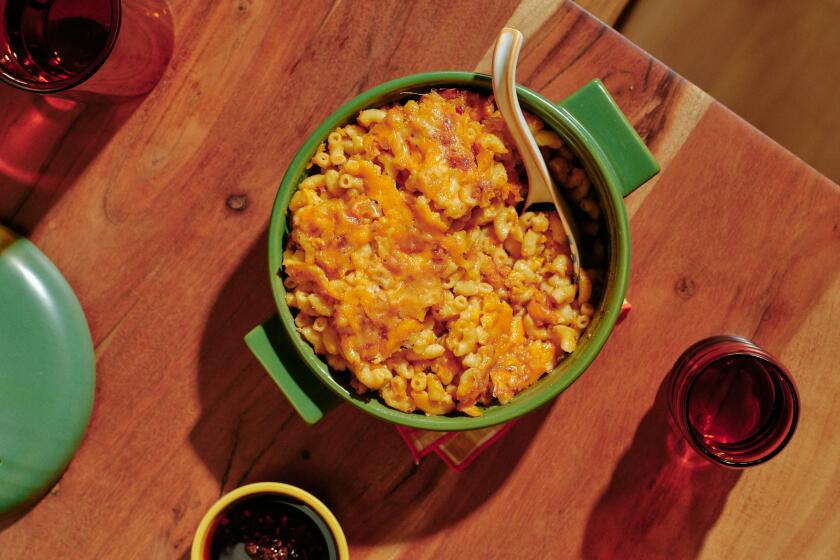Grilled cheese sandwich with Gorgonzola (un 'toast' alla vicentina)

If you take the subway from Milan’s Central Station to the last stop, you will reach Gorgonzola, the town that gave its name to the famous blue-green veined cheese that is Italy’s answer to Roquefort and Stilton. Appropriately, you reach Gorgonzola on the Green Line.
Centuries ago, the town of Gorgonzola was a fair distance from Milan and was part of a north-south grazing trail in Lombardy stretching from the Alps to the Po River. Gorgonzola was an important stopping place, and much milk was left there. The milk drawn from cows that made this journey produced a family of cheeses called stracchino. The word comes from stracco, which means tired or exhausted, which is what the cows were at this point in their trek.
The cheese is made from whole milk that is less rich than that drawn from a cow lolling in a high Alpine meadow. Some of the milk was turned into a delicious buttery soft cheese called Stracchino. But the rest of it was destined for greater glory.
Long ago, it was found that injecting a mold called Penicillium glaucum into a new cheese would preserve it for a longer time. And for eaters who could get past the notion that the mold was unsavory or unhealthy (it is neither), an exquisitely delicious cheese awaited. The town of Gorgonzola had another feature that made it ideal for producing its namesake cheese: damp caves with high humidity and constant temperature that were the ideal environment for aging the cheese for up to a year.
Other areas of northwestern Italy that had caves began to make a similar cheese and call it Gorgonzola. The most famous example came from the Piedmontese province of Novara at the Lombardy border. In recent times, the town of Gorgonzola has become part of the fast-growing Milan metropolitan area, and very little cheese is produced there. Nowadays, most of the cheese officially called Gorgonzola comes from near Novara. Though some of it is still aged in caves (a process called all’antico-in the ancient style), most of the cheese is produced in factories under computer-controlled temperatures and humidity under exacting sanitary conditions.
There are two types of Gorgonzola-dolce (sweet) and piccante (sharp). Perhaps it is strange to think of a veined, mold-laced cheese as sweet, but the dolce is. It has the buttery texture and yellow color of Stracchino with tang from the mold. This cheese spreads and melts very well. Interestingly, as the cheese is heated, the mold disappears; what is left is a sensational tangy hot cream.
According to Carlo Fiori, whose company, Luigi Guffanti, has made cheese in Arona (near Novara) since 1876, Gorgonzola dolce ages typically for 60 days and should be eaten young and fresh. It will not improve with age. The piccante, which ages for up to 90 days, is whiter and more crumbly than the dolce and has a pronounced bite. It will even improve with more aging. It is great for eating, ideally when matched with ripe pears and walnut meats, and washed down with a dessert wine such as Picolit or Torcolato from Italy or Sauternes from France. The piccante also melts well, especially when used in a pasta sauce. It also is the ideal companion for mostarda vicentina, a sort of fruit sauce from Vicenza made with quince puree, minced candied fruit and mustard seeds. You can make a home version of this using quince (if available) or pears. In the Lombard town of Cremona, people drizzle honey on Gorgonzola and eat it as a dessert.
Gorgonzola cheese comes wrapped in foil, which you should discard when serving. You might notice that Gorgonzola has a pockmarked exterior with an orange tinge. This too should be discarded, as it contains the only molds that are not necessarily pleasant to eat. Gorgonzola is widely available in good cheese shops, and certain mail-order purveyors sell very high-quality versions. Store the cheese in the coldest part of the refrigerator, wrapped tightly in plastic, until ready to serve. Let it stand, unwrapped, for 10 to 15 minutes before serving.
Spread the jam evenly on both pieces of bread.
Crumble the cheese or cut it into small chunks, then distribute it over one slice of bread, taking care not to get it too close to the edge. Press the other slice of bread on top so that the cheese adheres to the jam.
It you have a griddle for making grilled cheese sandwiches, use that according to its instructions. Otherwise, gently melt the butter in a skillet and then, before it browns, place the sandwich carefully in the middle. Immediately press down on the sandwich with a metal spatula until the bread is somewhat browned and the cheese starts to melt.
Lift the sandwich carefully, swirl the butter in the pan and then, using your fingertips for support against the bread and the spatula, flip the sandwich over and then slide it back into the pan. Press down with the spatula until the bottom side of the bread has toasted (but not burned) and the cheese has melted. If the cheese has barely melted, place the sandwich on a baking sheet in a 350-degree oven for 5 to 8 minutes. It tastes best when the cheese is oozing. Serve immediately.
Get our Cooking newsletter.
Your roundup of inspiring recipes and kitchen tricks.
You may occasionally receive promotional content from the Los Angeles Times.















